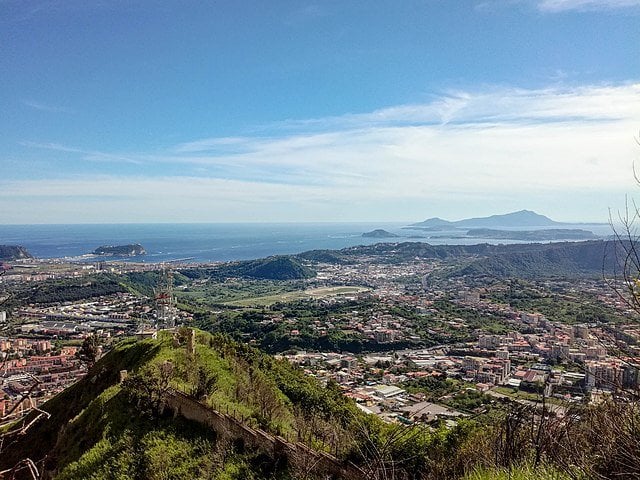Italy is truly rich in volcanoes, needless to say some of them are really dangerous, leaving catastrophic consequences in the past. The first volcano that comes to one’s mind is Mount Vesuvius which tore Pompeii apart, wreaking havoc upon the citizens and the beautiful architecture in 79CE. There’s also a more worrying volcano that lies not too far from the area, called Campi Flegrei, also called the Phlegraean Fields. The main structure of the massive Italian Volcano is large, stretching nearly 8 miles in diameter. If it erupted, it would carry serious consequences.
A new research published in the journal Science Advance suggests that the magma reservoir in the massive Italian volcano has started refilling itself, preparing for a massive eruption. The filled-up chamber could lead to a large eruption in the future. Even though this eruption is not imminent, the study suggests that experts should keep an eye on it.
The study also shows that the chemical composition of the magma entering the crater (caldera) has changed. Some substances get split from the magma, which causes the pressure in the caldera to rise. The team of researchers conducted research on rocks and minerals that formed during some of the 23 eruptions that took place in the area in recent geological history.
Scientists focused on the two major eruptions that took place 39,000 years ago and 15,000 years ago. The eruptions formed the caldera, with parts of the massive Italian volcano ending up underwater. There are a couple of smaller eruptions that changed the landscape of the region, but scientists wanted to see what the future of the Phlegraean Fields carries based on its recent geological past.
Scientists studied the year 1538, a time when an eight-day eruption occurred and led to the formation of Monte Nuovo, which is a cinder cone volcano. Researchers also studied the rocks before and after the eruption, noting certain changes. They found that the more modern rocks had a similar chemical composition to ones that tend to form before major eruptions occur.
“Understanding what the melt is doing below the surface is so important for helping us forecast what volcanoes might do in the future,” Janine Krippner, a volcanologist at Concord University in West Virginia told The Verge. Krippner was not involved in the research. “It’s really stunning research to see all of this data over all these eruptions being looked at to tell a story.”
Even though their study says a lot about how the massive Italian volcano has changes in its composition, the team wrote in their study that there is not enough evidence to draw a conclusion on when the next large eruption would be, or whether it’ll even be a major one. Scientists also suggest the possibility of the system becoming dormant.
A last year’s study published in May 2017 in the journal Nature Communications suggested that the eruption of Campi Flegrei could be closer than previously thought. The study also discovered that the geographical unrest since the 1950’s has cumulative consequences, which means that the volcano’s energy keeps building up in the crust, making the volcano more prone to strong eruptions in the future.
Volcanoes, especially the violent ones, are a fair example of how powerful nature can be against humanity. Predicting eruptions can often be the more challenging part of the research when it comes to all the volcanoes around the world.





